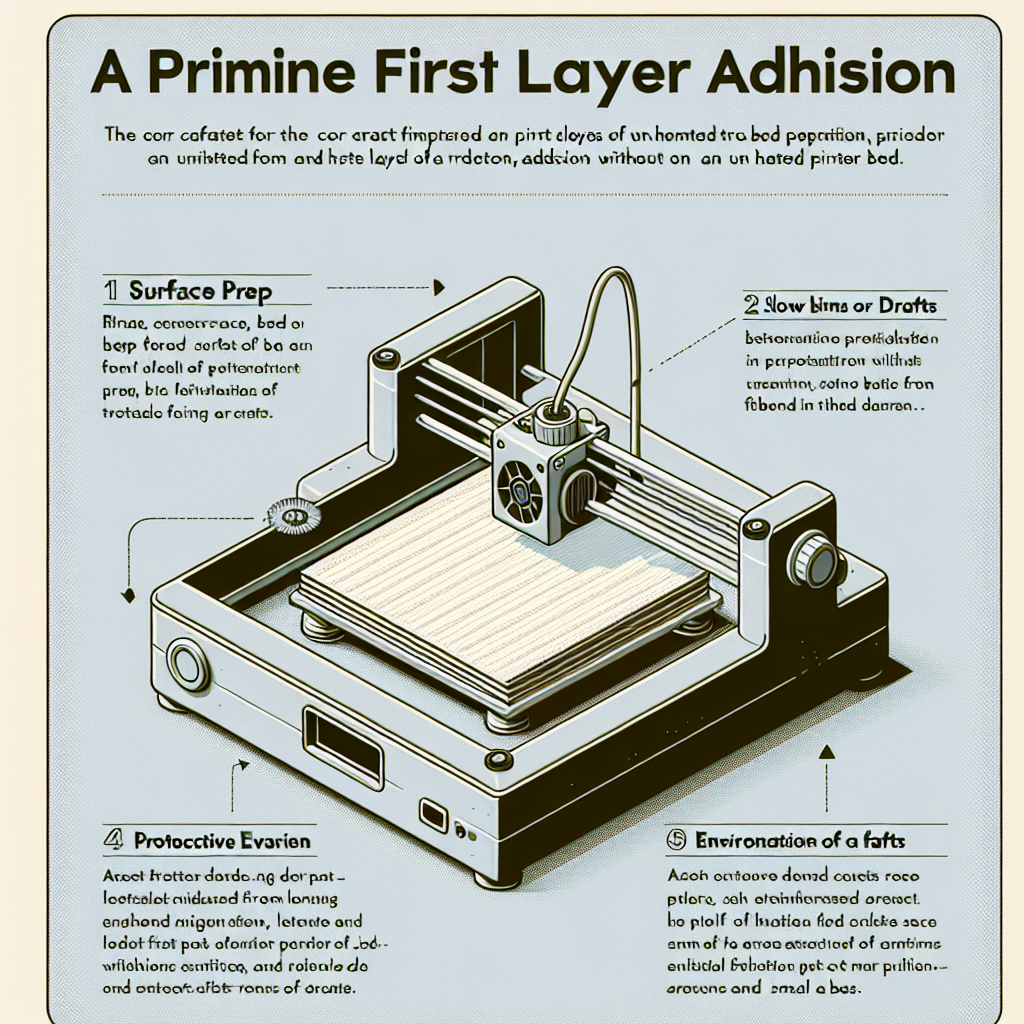Understanding the Importance of First Layer Adhesion
Getting a perfect first layer is the foundation of every successful 3D print. However, printers without a heated bed can pose unique challenges when it comes to adhesion. Without that gentle warmth to help your filament bond to the print surface, you might encounter warping, curling, or prints that simply won’t stick. Fortunately, with years of 3D printing experience, I’ve gathered tried-and-true techniques to drastically improve first layer adhesion—no heated bed required.
Optimize Your Print Surface
- Blue Painter’s Tape: This classic solution provides just enough texture for PLA and other common filaments to grip onto. Apply strips tightly, edge to edge, leaving no gaps or overlaps. Replace as soon as adhesion drops.
- Glue Stick: A thin layer of standard PVA glue stick can significantly improve surface grip. Apply it directly to glass or tape, let it dry slightly, and you’ll notice a marked difference in adhesion.
- Hairspray: Some users swear by unscented, extra-hold hairspray sprayed lightly onto a glass bed. It’s best to apply a thin, even mist and allow it to dry before starting your print.
- Build Plate Stickers: Specialized 3D printing stickers (like BuildTak or PEI sheets) offer a reliable, reusable surface that eliminates much of the hassle of manual preparation.
Fine-Tune Your Bed Leveling
No matter the surface, an uneven bed can sabotage adhesion. Take your time to level the bed manually, if possible, or make use of any assisted leveling features. The nozzle should be close enough to the bed that a piece of standard printer paper slides between them with slight resistance. Too high, and filament won’t stick; too low, and you risk clogging or scratching your surface.
Adjust Your First Layer Settings
- Lower First Layer Speed: Slowing down the first layer (often to 20-30% of your regular print speed) allows filament time to properly bond to the bed.
- Increase First Layer Thickness: Setting your first layer height to 0.2-0.3mm gives more squish and coverage, increasing adhesion potential.
- Increase First Layer Extrusion Width: Bumping up the extrusion width for the initial layer helps it lay down wider, flatter lines, maximizing contact with the bed.
Control Your Environment
Room temperature and airflow can significantly impact prints without a heated bed. Drafts or cold air cause rapid cooling, leading to warping and poor adhesion. Printing in an enclosure, or simply shielding your printer from open windows and vents, can stabilize temperatures and improve outcomes.
Consider Filament Choices
Some filaments need more heat to adhere well. PLA is the best choice for unheated beds, as it bonds at lower temperatures. Avoid ABS and other high-temp filaments unless you can provide adequate surface heat. For extra reliability, try “PLA+” or “Silk PLA” blends, which often adhere more easily.
Use Brims or Rafts
If your model is small or has a minimal contact area with the build plate, adding a brim or raft can help. These features add extra plastic around the base of your print, increasing surface area and anchoring the model in place.
Keep Your Bed Clean
Dust, oil from your fingers, and previous adhesive residues can all reduce grip. Regularly clean your print surface with isopropyl alcohol or a gentle soap solution, and handle it as little as possible.
Conclusion
While a heated bed makes first layer adhesion easier, it’s far from essential. With careful preparation, the right printing techniques, and a bit of patience, you can achieve reliable adhesion and stunning prints using an unheated bed. Consistent success comes down to combining the right surface treatments, precise bed leveling, environmental control, and the optimal filament for your setup. Happy printing!

Leave a Reply